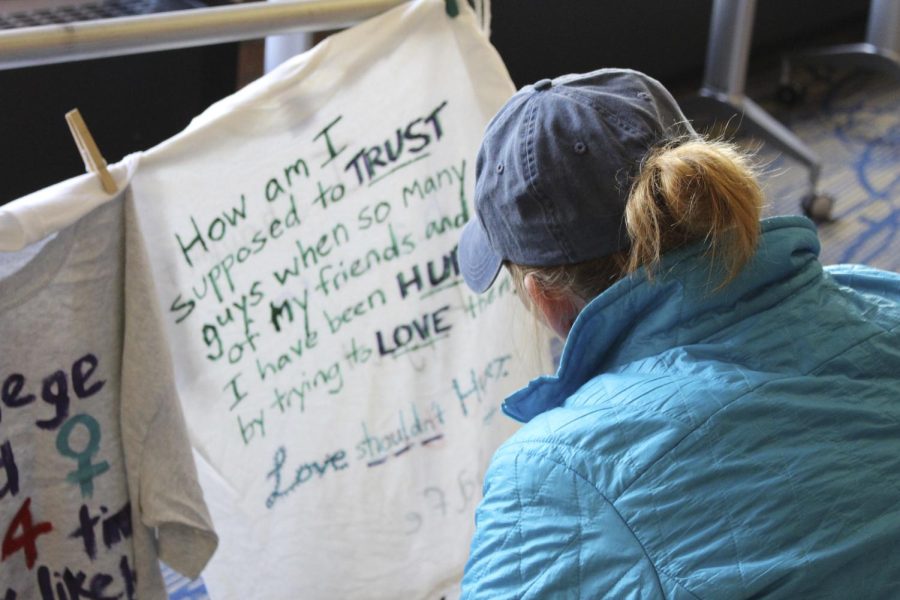SRVSS hosts Clothesline Project
Bella Adornetto, a Kent State sophomore criminology and justice studies major, looks at shirts at the Clothesline Project display in the Student Center on Tuesday, Oct. 25, 2016.
October 25, 2016
Kent State’s Office of Sexual and Relationship Violence Support Services (SRVSS) set up a one-day display called The Clothesline Project that took place upstairs in the Kent State Student Center on Tuesday.
The display is part of the national project that takes place all across the country.
“It’s an artistic way for people to express themselves about sexual assault,” said Stephanie Orwick, a coordinator at the Office of SRVSS. “It’s really about how people interpret that and what it’s like to be a survivor, an ally or an advocate.”
Each year, T-shirts are decorated with messages from survivors and advocates. The SRVSS office hosts shirt-making sessions, where students can make their own shirts to be a part of the display.
This year, the office hosted sessions with the LGBTQ Student Center, some Greek life groups on campus and Sister Circle, a support network for women of color.
“Typically with those, we bring statistics related to the group that we’re presenting to,” Orwick said. “If it’s Greek, what are the numbers for Greek (and) are there myths about Greek?”
Some of the statistics on the shirts were, “1 in 2 black girls face sexual assault” and “every 9 seconds a woman is assaulted or beaten.”
In addition to statistics, some choose to share their own story or personal experience, such as a student who wrote “I’m a gay male and a survivor.”
“It highlights the issue that violence affects all people and all communities,” said Ken Ditlevson, director of the LGBTQ Student Center. “We felt like (by being involved) … there would also be representation of statistics and information that reflected the violence within the lesbian, gay, bisexual, transgender, queer community.”
During the shirt-making session with the LGBTQ Student Center last year, there were eight to 12 students who came. Each student had been affected by sexual assault or domestic violence in some form, Ditlevson said.
“I was shocked by that because I really didn’t expect people to disclose such personal information, like sexual assault or being raped, with people they barely knew,” Ditlevson said.
The number of people participating in the project by sharing their stories continues to grow because people are more comfortable talking about it, according to Orwick.
“It’s safe to talk about this stuff, it’s safe to get help now, (and) it’s safe to start healing,” Orwick said.
Emily Grubb, a sophomore geography major and victim of sexual assault, said that being able to tell their story helped their healing process.
“Making those shirts is an easy way to get that story out and face it head on,” Grubb said.
Decorating a shirt not only helped survivors, but also brought personal awareness to those who may have not been directly affected.
“Not everyone is going to be a survivor,” Orwick said, “but when you get faced with statistics you’re like, ‘oh my goodness, this is happening. These are my friends. These are my bothers and sisters.'”
Adriona Murphy is the education, health and human services reporter, contact her at [email protected].

























